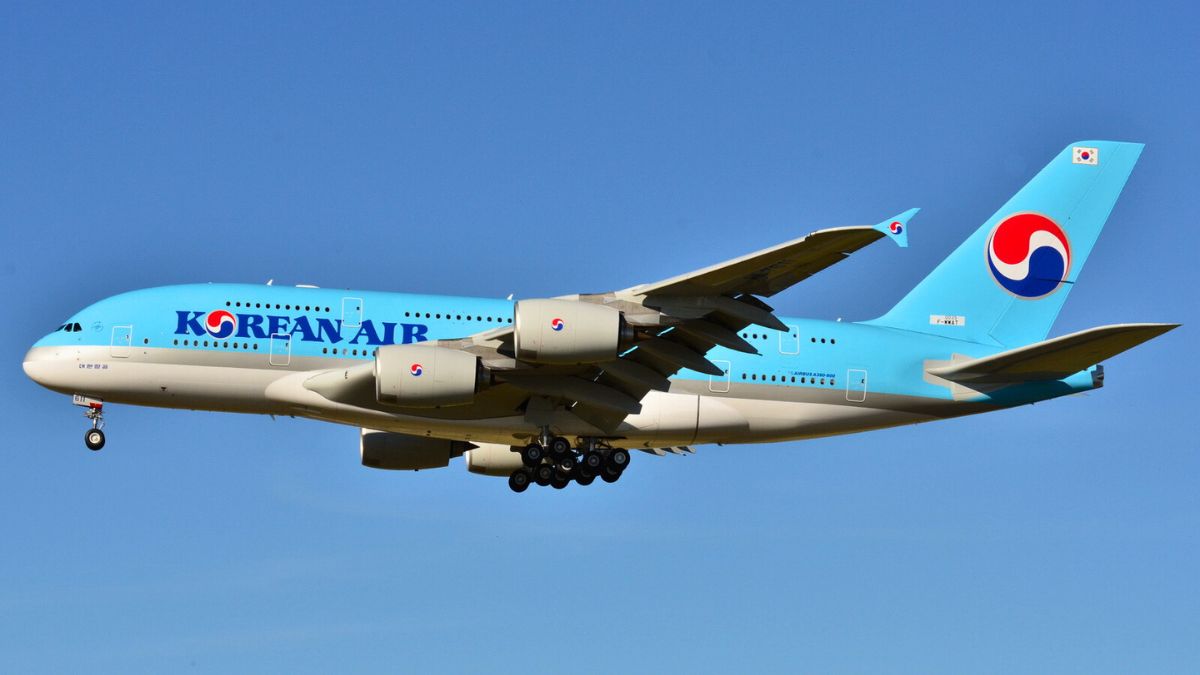Air travel has ended up as an indispensable portion of present-day life, connecting individuals over tremendous distances in a matter of hours. Yet, beneath the convenience and speed, lies a crucial aspect of aviation safety often overlooked by passengers: cabin pressurization. Recent incidents, such as the one aboard Korean Air Flight KE189 bound for Taiwan, serve as poignant reminders of the potential health hazards associated with sudden air pressure drops at high altitudes.
Table of Contents
The Incident: A Harrowing Experience
On a routine flight from Incheon International Airport to Taiwan, passengers aboard Korean Air Flight KE189 encountered a distressing ordeal when the plane’s cabin pressurization system malfunctioned. The aircraft rapidly descended from its cruising altitude of over 30,000 feet to approximately 9,000 feet in a matter of minutes. This abrupt change in altitude caused several passengers to suffer nosebleeds, severe ear pain, and episodes of hyperventilation.
Reports from the incident highlighted the visceral reactions of those onboard, including accounts of intense ear and head pain, akin to the forces experienced on a rollercoaster ride. For vulnerable passengers, such as children and individuals with pre-existing sinus conditions, the effects were particularly acute, compounding the overall anxiety and discomfort.
Understanding Cabin Pressure and Its Importance
Commercial aircraft are designed to maintain a stable cabin pressure, typically equivalent to an altitude of 6,000 to 8,000 feet, even when flying at much higher altitudes. This is achieved through a system that pumps compressed air into the cabin, ensuring a safe and comfortable environment for passengers and crew. When this system fails, the rapid change in pressure can have serious health implications.
Health Issues Arising from Pressure Drops
Ear Pain and Barotrauma:
The human ear is highly sensitive to changes in air pressure. Normally, the Eustachian tube helps equalize pressure between the middle ear and the external environment. A sudden pressure drop can overwhelm this mechanism, causing severe ear pain, known as barotrauma. In extreme cases, this can lead to a ruptured eardrum, resulting in hearing loss and an increased risk of infection.
Nosebleeds:
The mucous membranes in the nose are fragile and densely packed with blood vessels. Rapid pressure changes can cause these vessels to burst, leading to nosebleeds. For many passengers on KE721, this was a particularly distressing symptom, exacerbated by the confined space and the anxiety of the situation.
Hypoxia:
A significant pressure drop can reduce the amount of oxygen available in the cabin, potentially leading to hypoxia. Symptoms include dizziness, shortness of breath, confusion, and loss of consciousness. While the crew is trained to manage such emergencies by providing supplemental oxygen, the risk remains a serious concern.
Sinus Pain:
Passengers with sinus issues may experience intense pain as the pressure changes affect the sinus cavities. This can result in sharp facial pain and headaches, adding to the overall discomfort.
The Crew’s Response and Safety Measures
The crew of KE721 acted swiftly, following standard emergency procedures by donning oxygen masks and initiating a rapid descent to an altitude where passengers could breathe more comfortably. The quick decision to divert and make an emergency landing was crucial in ensuring the safety and well-being of everyone on board.
“Korean Air places the most extreme priority on passenger security,” said a representative for the aircraft. “Our flight team are prepared to handle such crises, and their quick actions today avoided a possibly more awful result. We apologize to our passengers for the trouble caused and will be conducting an intensive examination to get what went off-base.”
Preventative Measures and Future Implications
The aviation industry employs rigorous maintenance and inspection protocols to prevent incidents like these. However, the occurrence on KE721 underscores the need for continuous vigilance. Airlines regularly inspect the pressurization systems of their aircraft, but this incident may prompt additional reviews and perhaps more frequent checks.
Experts suggest that passengers can take certain measures to mitigate discomfort during pressure changes. Chewing gum, swallowing, or yawning can help equalize ear pressure. For individuals prone to nosebleeds or sinus issues, using a saline nasal spray before flights might provide some relief. Additionally, wearing earplugs designed for air travel can help regulate the pressure changes more smoothly.
Safety Measures and Precautions
In response to incidents like the one aboard KE189, airlines maintain rigorous maintenance schedules and safety protocols to ensure the reliability of cabin pressurization systems. Routine inspections and checks are conducted to detect and rectify any potential faults before they compromise passenger safety. Flight crews are extensively trained to handle emergencies, including rapid decompressions, with protocols in place to stabilize the cabin environment and manage passenger well-being effectively.
Passenger Precautions
Passengers can take proactive steps to minimize the discomfort associated with pressure changes during flights:
Stay Hydrated: Proper hydration can help alleviate symptoms of dryness and discomfort in the nasal passages and throat.
Use Ear Protection: Wearing earplugs or specialized ear protection designed for air travel can help regulate pressure changes in the ears.
Practice Equalization Techniques: Techniques such as swallowing, yawning, or gently blowing through closed nostrils can assist in equalizing ear pressure during ascent and descent.
Closing
The incident aboard Korean Air Flight KE189 underscores the importance of understanding the health hazards associated with air pressure drops during flights. While modern aviation technology and safety protocols strive to mitigate risks, passengers should remain informed and prepared. By recognizing the symptoms of pressure-related discomfort and employing preventative measures, travellers can enhance their comfort and safety while enjoying the convenience of air travel. Vigilance and awareness are essential for maintaining a positive and healthy flying experience for all.
